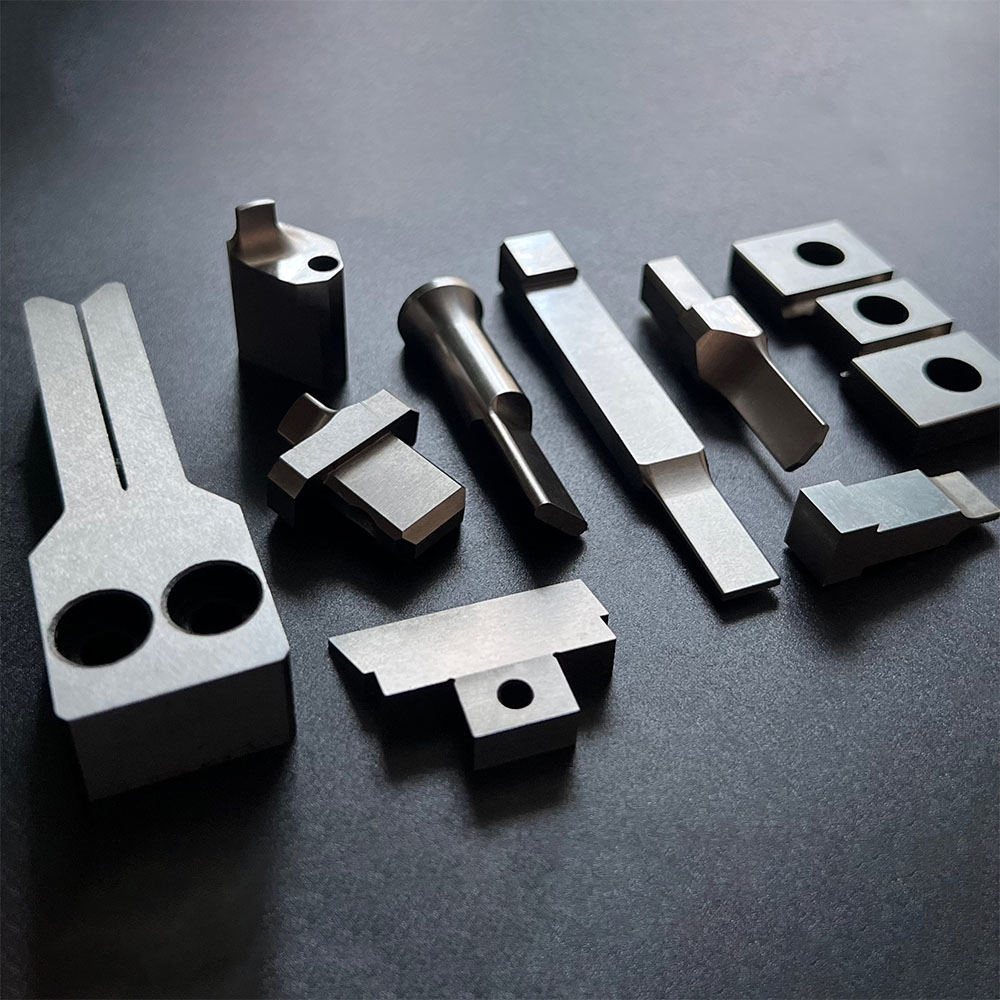In the world of Cold Heading, precision, speed, and efficiency are paramount. Every component in the process plays a crucial role in ensuring that metal blanks are formed into high-quality products. Among these components, Transfer Fingers stand out as essential elements that significantly enhance the efficiency of the cold heading operation. These components are designed to move metal blanks from one die cavity to the next with high precision, reducing downtime and improving the overall production process. In this article, we will explore how Transfer Fingers contribute to increased productivity, faster cycle times, and reduced errors in cold heading.

What is a Transfer Finger in Cold Heading?
Before diving into the ways in which Transfer Fingers enhance efficiency, it’s essential to understand what they are. A Transfer Finger is a small but critical component used in multi-die header Cold Heading Machines. Its primary function is to transfer the metal blanks from one die cavity to another during the cold heading process. The accuracy and speed of this transfer process are crucial because they ensure the metal blanks stay aligned, avoiding issues like deformation or misalignment that can occur during the transfer phase.
Reducing Downtime with Transfer Fingers
One of the most significant challenges in cold heading operations is machine downtime. Every time the machine needs to be adjusted, realigned, or recalibrated, production time is lost. This can lead to delays, increased labor costs, and reduced output.
Transfer Fingers help reduce downtime in several key ways:
Minimized Mold Adjustments: The Transfer Finger ensures that the metal blank is transferred smoothly and accurately between cavities, reducing the need for frequent mold adjustments. Without Transfer Fingers, operators might need to adjust or reposition the molds to account for misalignments caused by improper blank positioning, leading to wasted time and resources.
Reduced Error Rates: By transferring the blanks with high precision, Transfer Fingers prevent errors such as deformed parts or improperly positioned blanks. This reduction in errors means fewer interruptions to address issues, further contributing to minimized downtime.
Improved Operational Flow: Because Transfer Fingers streamline the movement of blanks between dies, the entire cold heading process becomes more predictable. Operators can focus on other tasks without constantly monitoring the transfer process, making the workflow smoother and more efficient.
Increasing the Speed of Metal Blank Transfers
Another critical area where Transfer Fingers shine is in increasing the speed of the cold heading process. Cold heading machines that incorporate Transfer Fingers benefit from faster transfer times, which directly impacts the overall cycle time.
Faster Production Cycles: The high-precision movement of metal blanks between molds ensures that parts are consistently positioned in the shortest possible time. This efficiency reduces cycle time, allowing the cold heading machine to complete more cycles within a given period, thus increasing overall production throughput.
Continuous Production Flow: With Transfer Fingers in place, the cold heading machine can maintain a continuous production flow. This minimizes delays between cycles, making the production process more efficient and helping to meet production targets more consistently.
Increased Throughput Without Sacrificing Accuracy: The precise action of Transfer Fingers ensures that speed does not come at the expense of quality. The blanks are transferred quickly but still maintain the correct orientation and position, ensuring that the finished products meet all specifications without defects.
Ensuring Accurate Transfers and Consistency
The Transfer Finger plays an essential role in ensuring that the metal blanks are consistently placed in the right position during the cold heading process. Accuracy in the transfer stage is crucial to prevent defects and maintain the uniformity of the final product.
Prevention of Deformation: One of the most common issues in cold heading is blank deformation during the transfer process. Without Transfer Fingers, metal blanks can shift, tilt, or warp, leading to defects that affect the final product. Transfer Fingers keep the blanks firmly in place, reducing the chances of deformation and ensuring that the blanks are transferred without issue.
Precision in Complex Shapes: When producing components with intricate geometries, precision is even more critical. Transfer Fingers are designed to handle complex shapes, ensuring that the blanks are placed in the correct position every time, preventing misalignment and reducing the likelihood of defects in the final product.
Uniformity in Mass Production: For high-volume manufacturing, consistency is key. Transfer Fingers ensure that each blank is transferred in exactly the same manner, maintaining uniformity in the production of identical parts. This uniformity helps meet tight tolerances and specifications, making the process ideal for mass production.
Reducing Manual Intervention
Another area where Transfer Fingers contribute to improved efficiency is in reducing the need for manual intervention. In traditional cold heading operations, operators often have to manually adjust or reposition blanks, which can slow down the process and introduce human error.
Automated Operation: Transfer Fingers automate the transfer process, allowing the machine to operate continuously without constant manual intervention. This reduces labor costs, minimizes human error, and allows operators to focus on other aspects of the production line.
Consistency and Reliability: By relying on automated transfer, manufacturers can achieve a higher level of consistency across batches. The Transfer Finger performs the same precise action every time, leading to more reliable outcomes and reducing the need for rework or quality control adjustments.
Transfer Fingers are indispensable components in multi-die header cold heading machines. Their ability to reduce downtime, increase speed, ensure accuracy, and minimize manual intervention significantly enhances the overall efficiency of the cold heading process. By automating the transfer of metal blanks with precision, Transfer Fingers enable faster cycle times, improved product quality, and increased production output. As manufacturers continue to seek ways to streamline their operations and improve productivity, incorporating Transfer Fingers into cold heading machines is a smart investment that will pay off in higher efficiency, reduced costs, and superior product consistency.











